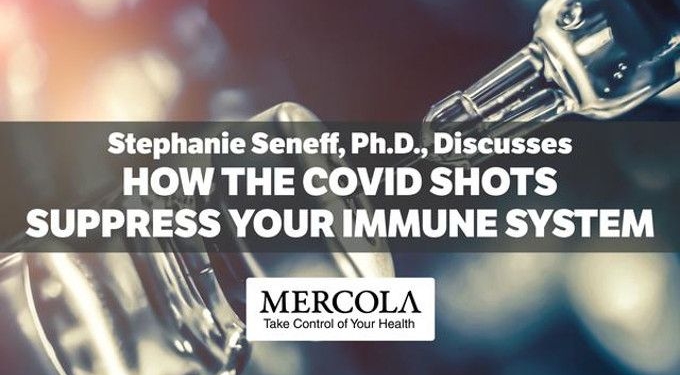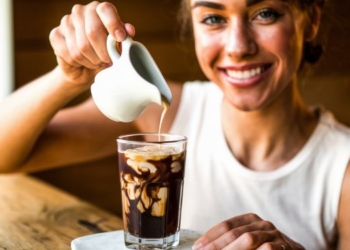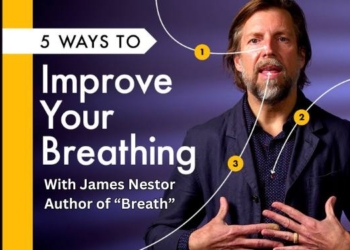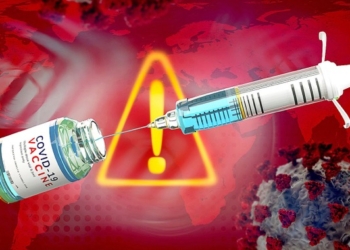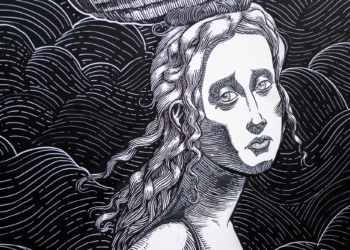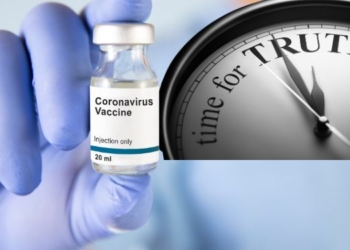Source: Mercola.com
Story at-a-glance
- In a non-peer-reviewed research paper just this week published, Stephanie Seneff, Ph.D., describes a mechanism of the COVID shots that results in the suppression of your innate immune system. It does this by inhibiting the type-1 interferon pathway
- The COVID jab can cause neurons in your brain to produce toxic spike protein, or take up circulating spike protein, and the neurons try to eliminate the spike protein by transmitting them through exosomes. The exosomes are picked up by microglia, immune cells in your brain, which activate an inflammatory response, which can contribute to degenerative brain disorders
- Two microRNAs, miR-148a and miR-590, are central in this process. These microRNAs — excreted in the exosomes along with the spike protein — significantly disrupt the type-1 interferon response in any cell, including immune cells
- On average, there are twice as many reports of cancer following the COVID shots compared to all other vaccines combined over the last 31 years
- The fact that the signal is that strong is even more remarkable when you consider that most people don’t think the COVID shot could be a variable in their cancer emergence, so they never report it
In this interview, return guest Stephanie Seneff, Ph.D., a senior research scientist at MIT who has been at MIT for over five decades, discusses her latest paper, “Innate Immune Suppression by SARS-CoV-2 mRNA Vaccinations. The Role of G-quadruplexes, Exosomes, and MicroRNAs,” co-written with Dr. Peter McCullough, along with two other authors, Dr. Greg Nigh and Dr. Anthony Kyriakopoulos.
Previously, Nigh and Seneff co-wrote an entire paper detailing the differences between the spike protein and the COVID jab spike protein. In a non-peer-reviewed research paper, just this week published on the pre-print service authorea, they and their other co-authors delve deeply into the mechanisms of the COVID shots, showing how they absolutely, in no way, shape or form, are safe or effective. The shots actually suppress your innate immune system.
“I think McCullough is fantastic and I'm so happy to have him collaborate with me,” Seneff says. “I really hope we will be able to find a journal that is willing to publish it. We may have to seek some kind of alternative media to get it published.
It's really incredible the amount of censorship that's going on right now. I'm in a state of shock all the time. I just keep thinking it's not going to get any worse, and it's truly going to get better, and it just seems to keep on getting worse and worse.
I don't know where the end is. It's very discouraging … Pharma has so much money behind [them] and they've got it all set up to make sure that nothing gets past them …
We're hoping to put it up as a preprint, but … remarkably, they can reject it at the level of preprint as well. We're working on that angle, but it's not easy. When you're writing something this radical, they really fight hard to keep it off the web.”
On January 16, 2022, the pre-print service Authorea published this paper on its website, assigning it a DOI, thus making it official.
Exceptionally Strong Safety Signals
As noted by Seneff, when you look at the various databases for adverse effects, you can see an exceptionally strong safety signal — and the COVID shot developers know that. “The numbers are out of sight,” Seneff says, and this goes for all levels of side effects, from mild to catastrophic.
Seneff has been looking at the cancer data, for example, and on average, there are twice as many reports of cancer following the COVID shots compared to all other vaccines combined over the last 31 years.
“It's just amazing, because it's overall two times [higher]. Breast cancer, for example, is three times [higher] for these vaccines in one year, as they are for all the other vaccines for 31 years. It's a hugely strong signal,” Seneff says.
“Lymphoma is also showing up much more frequently with these [COVID shots]. There's just an amazing signal there in VAERS [the U.S. Vaccine Adverse Events Reporting System].”
The fact that the signal is that strong is even more remarkable when you consider that most people don't think the COVID shot could be a variable in their cancer emergence, so they never report it. “It puzzles me that they're willing to do such damage to the health of the whole population of the world. I don't understand that degree of evilness,” Seneff says.
Type-1 Interferon Disruption
The shots suppress your innate immune system by inhibiting type-1 interferon. One of the first studies to tip-off Seneff and McCullough to this was an Indian study, in which human cells grown in culture were exposed to the DNA nanoparticles that instruct them to make SARS-CoV-2 spike protein, much like the COVID shots do.1
The cell strain is called HEK-293. These are cells that were taken from the kidneys of an aborted fetus in the 1980s and are frequently used in research. While taken from the kidneys, these cells have neuron-like properties. When programmed to make spike protein, these cells release that spike protein inside exosomes — lipid nanoparticles inside which the spike protein is packaged.
Exosomes act as a communication network for cells. When a cell is under stress, it releases exosomes containing some of the molecules that are stressing it. So, in the case of the COVID shots, the exosomes contain spike protein and microRNA. MicroRNAs are signaling molecules that are able to influence cell function. They cause the cell to change its behavior or metabolism. Typically, they do this by suppressing certain enzymes.
The Indian study found two specific microRNAs inside the exosomes released by these neuron-like cells: miR-148a and miR-590. The researchers then exposed microglia (immune cells in your brain) to these exosomes. So, as explained by Seneff, you've got neurons in your brain producing spike protein or taking up spike protein that is in circulation, and reacting to it by releasing exosomes.
The exosomes are then picked up by microglia, the immune cells in your brain. When the immune cells receive those exosomes, they turn on the inflammatory response. This is primarily a response to those microRNAs, the miR-148a and miR-590. Of course, you also have the toxic spike protein there.
Combined, they cause inflammation in the brain, which damages neurons. This inflammation, in turn, can contribute to a number of degenerative brain disorders. The lipid particles in the COVID shot, which contain the mRNA, are similar to exosomes, but not identical. They're also very similar to low-density lipid (LDL) particles.
“I think the exosomes are probably quite a bit smaller. The vaccine particles are bigger. They're more like an LDL particle. The vaccine particles have cholesterol in their membrane, and they have lipoprotein. So, they're made to look like an LDL particle.
But then they throw in this cationic lipid, which is really, really toxic — a synthetic cationic lipid that makes it positively charged. Experimentally, they've found that this lipid, when the particle is taken up by the cell, is released into the cytoplasm, [where] that mRNA then makes spike protein.
[The COVID shots] are very cleverly designed, both in terms of protecting the RNA from getting broken down, and in terms of making the RNA be very efficient at making spike protein. It's very different from the mRNA that the virus makes, even though it codes for the same protein.”
Seneff wrote an entire paper2 detailing the differences between the viral spike protein and the COVID jab spike protein, together with Greg Nigh, which was published in the International Journal of Vaccine Theory, Practice and Research in May 2021. It basically serves as a primer for understanding what we discuss here.
Getting back to the Indian paper cited above, they found that the microglia ended up producing inflammation in the brain, and the two microRNAs were central in this process. The miR-148a and miR-590 were put into those exosomes with the spike protein, and these two microRNAs are able to significantly disrupt the type-1 interferon response in any cell, including immune cells.
Type-1 interferon also keeps latent viruses like herpes and varicella (which causes shingles) viruses in check, so if your interferon pathway is suppressed, these latent viruses can also start to emerge. The VAERS database reveals many who have been jabbed do report these kinds of infections. Suppressed interferon also raises your risk of cancer and cardiovascular disease.
Type-1 Interferon Response Is Crucial in Viral Infections
As explained by Seneff, the type-1 interferon response is absolutely crucial as the first-stage response to a viral infection. When a cell is invaded by a virus, it releases type-1 interferon-alpha and type-1 interferon beta. They act as signaling molecules that tell the cell that it's been infected.
That, in turn, launches the immune response and gets it going early in the viral infection. It's been shown that people who end up with severe SARS-CoV-2 infection have a compromised type-1 interferon response. As noted by Seneff:
“It's ironic that the vaccines are being given to protect you from COVID, yet, they produce a situation where your immune cells are ill-equipped to fight SARS-CoV-2 if it gets into the cell. The trick is, the vaccine produces a tremendous antibody response, and that's typical of severe disease.
So, the [COVID shot] fools your immune system into thinking that you've had a severe case of COVID. It's really interesting that way, because it's gotten past the mucosal barrier of the lungs, it's gotten past the vascular barrier of the blood, into the muscle. Also, it's been disguised.
The RNA doesn't look like a virus RNA, it looks like a human RNA molecule. Part of the modifications [made to the mRNA in the jab] was to make it very sturdy, so it can't be broken down. It's also very good at making [spike] protein fast, which also has a problem because it leads to a lot of errors, which is another issue …
The immune cells take up the nanoparticles and carry them through the lymph system into the spleen. Multiple studies have shown that it ends up in the spleen … the ovaries, the liver, the bone marrow … The spleen, of course, is very important for producing antibodies.”
Importantly, the antibody response you get from the COVID shot is exponentially higher than what you get from natural infection, and research has shown that the level of antibody response rises with disease severity. So, the shot basically mimics severe infection. In mild infection, you may not produce any antibodies at all, because the innate immune cells are strong enough to fight off the infection without them.
It's when your innate immune system is weak that you get into trouble, and part of that weakness is a suppressed type-1 interferon response. If your type-1 interferon response is deficient, your immune cells are not very capable of stopping the spread of the virus in your body.
According to Seneff, the reason type-1 interferon supplementation has not been recommended thus far is that you have to time it perfectly in order for the immune cascade to function properly. Type-1 interferon plays a definitive role only at the very earliest stage of the infection. Once you've entered a moderate or severe infection stage, it's too late to use it.
COVID Shots Confuse Your Immune System
As noted by Seneff, the COVID shots are so unnatural that your immune system doesn't quite know what to do anymore.
“My impression is that the immune cells don't know what the hell's going on. There's this toxic protein being produced in massive amounts by the immune cells. That's extremely unusual. There's no sign of any kind of viral infection because these RNAs look like human RNAs.
It's as if the human immune cells suddenly decided to make a really toxic protein, and make lots of it — which is exactly what they're doing — and the immune system is completely baffled by this. The immune cells have no clue what to do with it.
Of course, these immune cells that are overloaded with all this spike protein, they say, ‘I've got to get rid of this stuff,' so they ship it out as these exosomes. The microRNAs [in the exosomes] think that the recipient cells are going to need those particular signaling molecules to help it do whatever it needs to do to cope with this toxic load.
So, you're spreading the spike protein around to the rest of the body, just to dissipate the toxicity you're coping with in the spleen, I think. Those exosomes are also very good for training antibodies. There was a nice paper that showed the exosomes being released [have] spike protein in their membrane, the exterior of the exosome.
It's quite cool that the spike protein is displayed there, because this allows the immune cells — the B-cells and the T-cells that need to get up close and personal to it — to figure out how to shape their antibodies. The antibodies get shaped to match the toxic protein that's exposed on the surface of the exosomes.
After something like 14 days of the second [jab], the exosomes induced an antibody response. [The researchers] felt the exosomes played a critical role in this extreme antibody response that was produced by the B-cells and the T-cells, the adaptive immune system.
But I think the way the vaccine works is that there's no game that you can choose other than to make antibodies. It's the only way you can fight this. It's a toxic protein that's being produced and released by these immune cells, and the only thing you can do to stop it is to make antibodies.
They try to make lots and lots of antibodies that will glue onto those toxic spike proteins and block them from being able to get in through the ACE2 receptor. That's the job of the antibodies. They do a good job of it, initially … It's true that they do protect you from disease. Unfortunately, the antibody levels drop pretty dramatically, pretty quickly.”
There are also antibodies that enhance disease rather than fight it, and the level of these antibodies declines at a slower pace than the protective antibodies. So, after a number of months, you end up with a NEGATIVE immune response. In other words, you're now more prone to infection than ever before. As explained by Seneff:
“There's a crossover point at which the enhancing antibodies can be stronger than the protective antibodies, and that's when you can get this antibody dependent enhancement (ADE) that people have seen in the past with [other] coronavirus vaccines. We're still trying to see if that's the case with [the COVID jabs]. There is some evidence here and there, but it's not [conclusive yet].”
The Importance of Cytotoxic T-Cells
After the India study tipped off Seneff and McCullough to the interferon problem, they came across a Chinese study3 that tracked the effect of the COVID jab on the immune system over time. Here, they discovered that the infection caused an increase in CD8+ T-cells, important cytotoxic T-cells that actually remove infected cells.
As noted by Seneff, the CD8+ cells are an important part of the defense against SARS-CoV-2. Importantly, CD8+ T-cells were enhanced in response to natural infection, but not in response to the COVID shot. They too found type-1 interferon suppression post-jab. So, in the aftermath of the jab, not only is your first-line response depressed — the type-1 interferon response — but you're also missing the part of the immune response that cleans away infected cells.
The microRNA That Influences Myocarditis Risk
A third microRNA (mRNA) created by natural SARS-CoV-2 infection is miR-155, and it plays an important role in heart health. Early on in the pandemic, there were reports of COVID-19 causing heart problems.
Seneff suspects the miR-155-containing exosomes may also be present post-jab and may play a role in the heart damage that's being reported. Specifically, miR-155 is associated with myocarditis. As mentioned earlier, microRNA suppresses certain proteins that then cause a complicated cascade response. When a particular protein that is a critical player gets suppressed by a microRNA, then a whole different cascade takes place.
Why Autoimmune Problems May Arise Post-Jab
The antibodies produced by the jab also have several short peptide sequences in them that have previously been found in several human cells that are related to autoimmune disease. Seneff explains:
“Kanduc has written a lot about this. She's an expert on these antibodies … The [SARS-CoV-2] spike protein is very overlapped with human protein. That means when you build a really strong antibody response to the spike protein, those antibodies can get confused and they can attack a human protein that has a similar sequence.
That's a classic form of autoimmune disease. It's called molecular mimicry. There were many different proteins that matched. It was quite surprising … It seems to be very well designed to induce autoimmune disease, if you produce antibodies to those sequences in the spike protein.”
Neurological Problems in Women
The shots are also tightly associated with neurological problems such as uncontrollable tremors and shaking. Curiously, this side effect disproportionally affects women. The mechanism here again involves the exosomes. Seneff explains:
“I feel there's a very strong signal for the idea, which I'm pushing, that you have those immune cells in the spleen making spike protein and releasing it in exosomes. It's been shown in studies on Parkinson's disease that those exosomes travel along nerve fibers.
They'll go along the splanchnic nerve, they'll hook up with the vagus nerve, they'll go up to the brain and get into all these different nerves in the brain. When you look at the VAERS database, you see tremendous signals for all kinds of things that suggest different nerves are being inflamed.
For example, there are 12,000 cases of tinnitus associated with the COVID-19 vaccine, and that's only what's reported. Tinnitus is a strong signal. Tinnitus is going to be inflammation of the auditory nerve. This means you have to go all the way from the spleen, up the vagus nerve, and then connect to the auditory nerve to cause tinnitus.
Then you have Bell's palsy, which is inflammation of the facial nerve. You have migraine headache. There are over 8,000 cases of migraine headache, which is linked to an inflammation of the trigeminal nerve.
It probably also goes, I suspect, along the nerve fibers of the spinal column, which may be causing some of these cases where they're finding paralysis. People have a lot of mobility issues connected with these vaccines.
I see the possibility of causing a lot of disturbances to the myelin sheath, and we talk about that in the paper. It involves, again, complex signaling. You can get to the myelin sheath problem through the type-1 interferon disruption.
That, again, involves something called interferon response factor 9 IRF9. This protein triggers the production of sulfatide in the liver, and this protein gets suppressed by these microRNAs that I mentioned earlier.”
Sulfatide, an important lipid carrier, is the only sulfonated lipid in the human body. Your liver makes most of the sulfatide, which is then carried by your platelets (blood cells) to other areas in your body. The myelin sheath contains high amounts of sulfatide. It's part of what protects the myelin sheath. In demyelinating diseases, that sulfatide erodes, ultimately allowing the myelin to be attacked.4
Seneff believes the COVID jab results in significant myelin damage, thanks to these inflammatory exosomes. This damage does not necessarily show up right away, although some jab recipients experience acutely devastating effects. It could take 10 years or more before a demyelinating disease sets in.
“I think we're going to see people getting these neurodegenerative diseases earlier and earlier in life than they used to,” Seneff says, “and I think anybody who already has any of these diseases is going to have accelerated progression.”
We May Soon See an Explosion of Parkinson's Cases
Disturbingly, loss of smell and dysphagia, the inability to swallow, are both signs of Parkinson's disease, and both of these conditions are being reported post-jab by the thousands. So, in years to come, we could be looking at an explosion of Parkinson's.
“Parkinson's studies have shown that you can get pathogens in the gut that produce a prion-like protein, which is what the spike protein is. The immune cells then take it up and take it to the spleen. This, of course, causes stress.
A stressed immune cell in the spleen upregulates and produces more alpha-synuclein. Alpha-synuclein is a molecule that fights infection, and that's the molecule that misfolds in association with Parkinson's disease.
I'm fascinated with all of these molecules that are prion-like. There's the prion protein itself, which is associated with CJD, Creutzfeldt-Jakob disease, but then there's the alpha-synuclein and amyloid beta, there's TDP-43, which is associated with ALS.
All of those diseases are overrepresented in the VAERS database for the COVID shots, compared to all the other vaccines combined over 31 years. It's just completely out of line.
There are 58 cases of Alzheimer's in association with the COVID vaccines, and 13 in association with all the other vaccines over 31 years. That's several times more — 58 versus 13.
CJD is also much more common. It's almost seven times as common in the COVID vaccine cases. CJD is a terrible disease. You get very crippled and die after a few years. That's the classic prion protein [disease]. It's extremely rare. Only 1 in 1 million gets CJD.
There was a person who contacted me from France whose wife got CJD just a few weeks after the second vaccine. He was absolutely convinced the vaccine caused it. There are actually 27 cases [of CJD] reported in VAERS for the COVID-19 vaccines, against only four cases over the entire history of all other vaccines combined.”
Health Problems We Can Expect to See More Of
In time, Seneff predicts we'll see a dramatic increase in infections and cancers of all types, autoimmune diseases, neurodegenerative diseases, and reproductive issues. As mentioned, research has demonstrated that the spike protein accumulates in the spleen and women's ovaries.
Without a doubt, inflammation in the ovaries is not a good thing. Men also report swollen testes, and that could be indicative of inflammation as well. Preliminary data show women who get the jab within the first 20 weeks of pregnancy have a miscarriage rate of 82% to 91%.5 There are also VAERS reports describing fetal damage. Of course, it could also impair future fertility.
As described earlier, some antibodies produced by the jab can react to human proteins. One protein that is similar to the spike protein that the antibodies attack is syncytin, which is essential for the fertilization of the egg. The concern is that the antibodies might attack and destroy syncytin, thereby disrupting and preventing implantation in the placenta.
Omicron — A Blessing in Disguise?
The jabs also perpetuate COVID, with ever-new variants of the virus.
“In the first paper that Greg and I wrote, we predicted the vaccines would cause an increased emergence of variants of spike protein, altered versions of the virus, under the pressure of the vaccine,” Seneff says.
“Indeed, it looks to me like that's what's happening. But I'm really hopeful with Omicron, because Omicron looks like it's a milder virus, but incredibly infectious. It'll flash through the population and give everybody, essentially, a vaccine. It's kind of like a natural vaccine, I think.
[Research] showed that … having had Omicron, you were protected, to some extent, from Delta. Delta's disappearing anyway, because Omicron is chasing it out. It's really great. I think Omicron is God's gift from heaven.”
That blessing may be canceled out in those who have received multiple COVID jabs, however. Each dose erodes your immune response, such that it becomes increasingly compromised with each jab. Again, this has to do with the suppression of type-1 interferon, discussed earlier.
What Catalyzes Damage in Athletes?
More than 400 cases of serious heart problems and death have also been reported among professional athletes,6 of who are some of the healthiest people on the planet. What mechanism can account for this phenomenon? How is it that the COVID jabs can cause enough damage to take out young people with optimized biology?
Seneff suspects that being fit might cause you to have more ACE2 receptors in the heart, and the S1 portion of the SARS-CoV-2 spike protein binds to the ACE2 receptor. She believes the spike protein is being delivered to the heart via exosomes, by way of the vagus nerve, and, again, the miR-155 exosome is associated with heart problems.7
Additionally, when the S1 spike protein binds to the ACE2 receptor,8 it disables the receptor. When you disable ACE2, you get an increase in ACE, which causes high blood pressure and elevates angiotensin 2. When angiotensin 2 is overexpressed, you can get intense inflammation in the heart. If you're engaging in intense exertion and your heart is inflamed, you can trigger cardiac arrest, which is what we see in many of these athlete cases. They're collapsing on the field.
G-Quadruplexes
Another focus of Seneff's and McCullough's paper is something called G4 or G-quadruplexes.
“G-quadruplexes are really fascinating, and I don't have a handle on them at all,” Seneff says. “It's hard biology, even harder than a lot of the other stuff that I've been reading …
G4s are basically an arrangement of [guanines]. Guanines are one of the four nucleotides that make up DNA or RNA. Guanine is the G in the G4. What happens is that a sequence of nucleotides on a DNA or an RNA string can fold in on itself and form G-quadruplexes. It's four guanines, at different places on the protein, winding back around and sticking together.
There's a metal in the middle — often potassium or calcium — that helps to stabilize these G4s. The interesting thing about them is that they make the water around them structured. They make gelled water [aka exclusion zone (EZ) water] …
Those G4s can form in the DNA, and that actually keeps it from becoming active. [The DNA] doesn't get converted into RNA, and it doesn't make protein if it has those G4s. Probably, the EZ water doesn't allow anything to get close. Think of it as being stuck in a gel.
There are a lot of G4s in the promoter regions of these DNA sequences, and there are lots of proteins that have these G4s in their promoter region. Interestingly, there are certain proteins that can unravel them. There are proteins that can bind to them and cause the G4 to undo, and that activates or allows the protein to be expressed.
It's a regulatory element that controls which proteins get to be expressed from the DNA. Many of the proteins that have these G4s in their promoter are cancer oncogenes. As long as they stay gelled, they're inactive, but if they become ungelled, they become active.
It turns out that prion proteins … [are] made from RNA, and the RNA has these G4s. The protein can bind to the G4s in the RNA and both of them react. The theory is that the protein becomes prion-like. These prion proteins have two ways to be, one is safe and one is not safe, and the G4s increase the risk for prion protein misfolding.
The presence of those G4s, and the meeting with those G4s, increases the risk of misfolding in the prion-like configuration.9 The interesting thing about that is that spike protein is a prion-like protein. The RNA they built for the [COVID jab], they did something called codon optimization, which involved putting a lot more guanines into the RNA than [found] in the original [virus]. They enhanced the guanine.
Enhancing the guanine means increasing the number of G4s, which means increasing the risk of the spike protein misfolding into a prion like protein. I think that the G4s increase the risk, the danger of spike protein [acting] as a prion-like protein.
But we don't really know what the consequence of having all these G4 RNAs in the cytoplasm will be. We have massive numbers of these RNAs sitting there with their G4s. What is that going to do to the rest of the G4 regulatory process? We do not know. Nobody knows. Nobody has a clue.”
Summary
To summarize the central point of Seneff's latest paper, the COVID jab causes alpha-interferon suppression, which weakens your immune system. Indeed, regulators in the European Union are now warning that repeat COVID shots can weaken overall immunity.10
The primary mechanism is the impairment of alpha interferon response, which is essential for the proper activation of your innate immune system, your cellular immunity, mostly your T-cells and killer cells. When functioning properly, the cell launches the type-1 interferon response as soon as it's infected with a virus.
It triggers the immune cells to come in, kill the virus and remove the debris. This activates the humoral component of your immune system, antibody production, which takes longer. (That's why they say you are not protected until 14 days after the injection.)
How is type-1 interferon suppressed by the jab? It's suppressed because type-1 interferon responds to viral RNA, and viral RNA is not present in the COVID shot. The RNA is modified to look like a human RNA molecule, so the interferon pathway is not triggered. Worse, the interferon pathway is actively suppressed by the large number of spike proteins produced from the mRNA in the shot, and by the microRNAs in the exosomes released by the stressed immune cells.
- 1 Frontiers in Immunology April 14, 2021, DOI: 10.3389/fimmu.2021.656700
- 2 International Journal of Vaccine Theory, Practice and Research May 10, 2021; 2(1): 402-444
- 3 Cell Discovery 7, Article number: 99 (2021). October 26, 2021
- 4 J Lipid Res. 2012 Aug; 53(8): 1437–1450
- 5 Science, Public Health Policy, and the Law November 2021; 4: 130-143
- 6 Good Sciencing Athlete Deaths
- 7 European Journal of Heart Failure March 5, 2021
- 8 Frontiers in Immunology June 4, 2021
- 9 Nucleic Acids Res. 2014 Aug 18; 42(14): 9327–9333
- 10 Business Standard January 12, 2022



